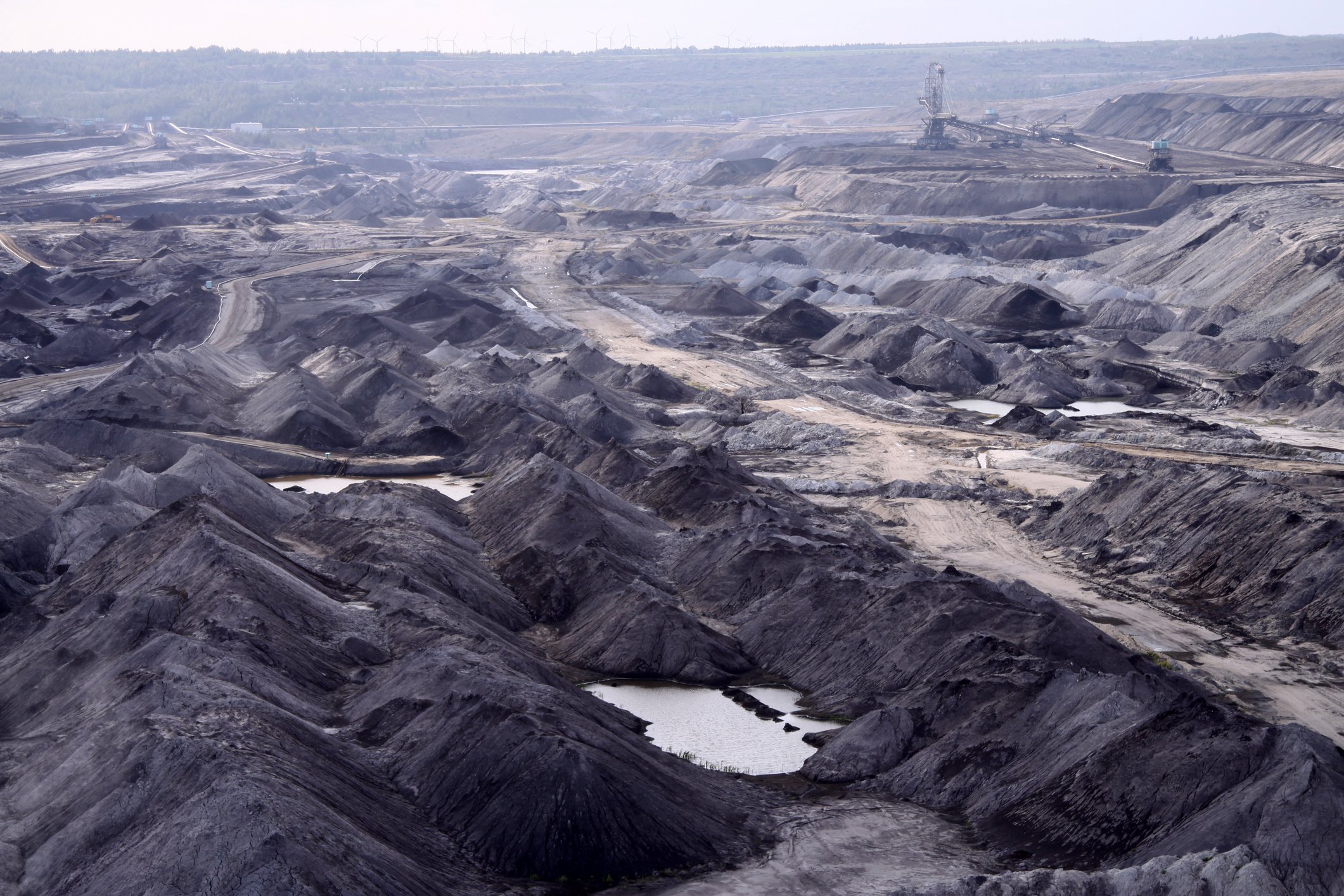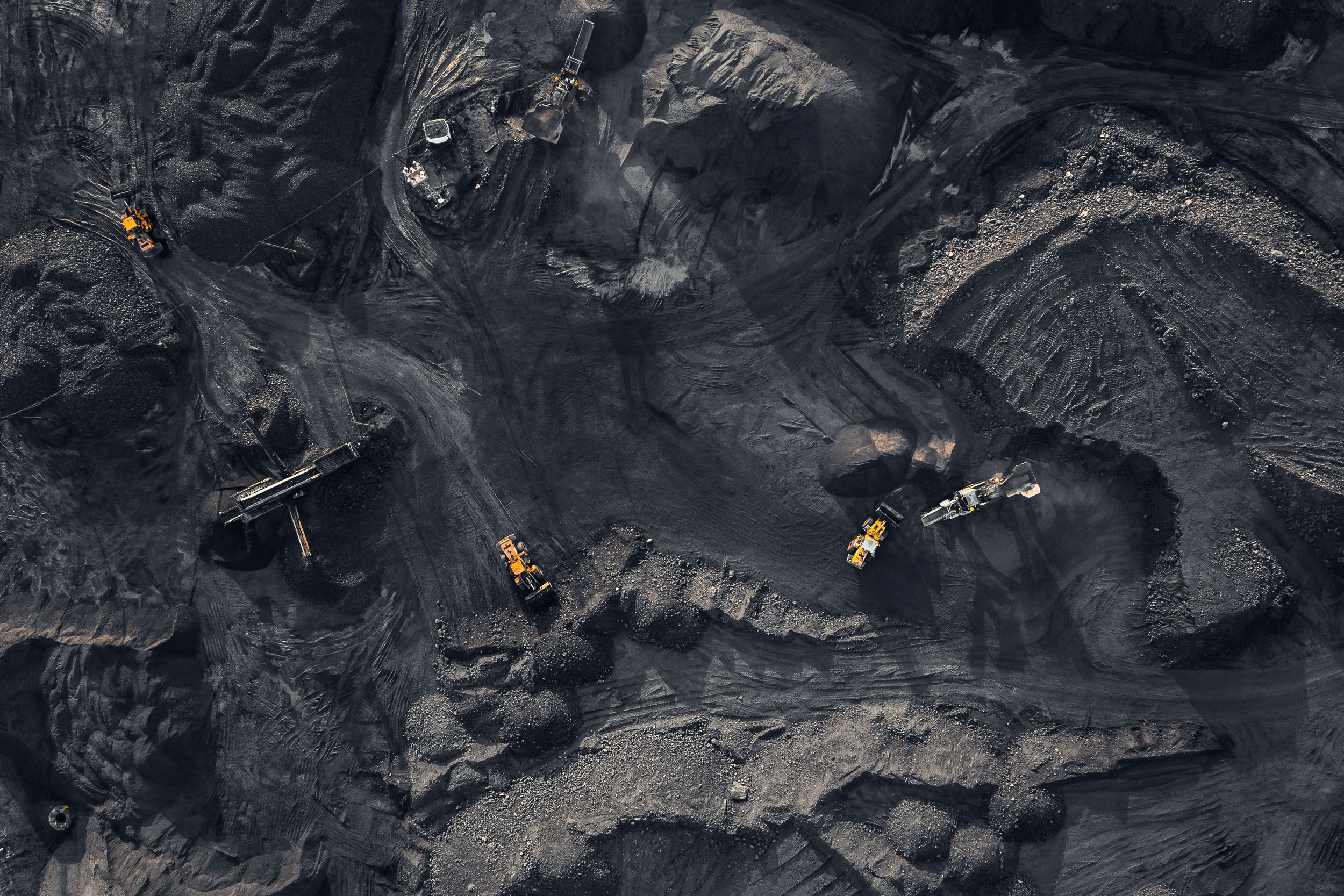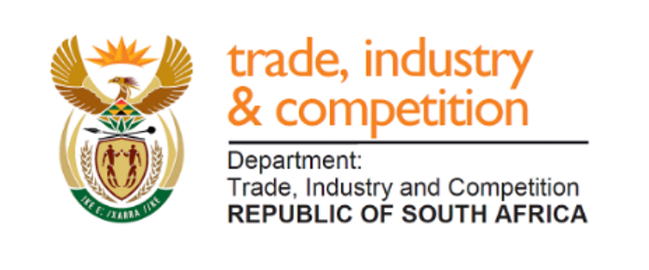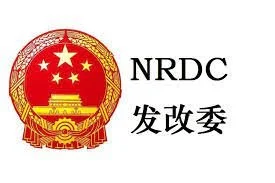The industrial-scale threat
The Musina-Makhado SEZ
and the Greater Soutpansberg Coalfield
The false promise of heavy industrialisation
The architects of the Musina-Makhado SEZ promise deliverance from joblessness for the impoverished Vhembe and proclaim themselves visionaries who will give rise to the coming century’s Witwatersrand, built not on gold, but on steel and coal. It is a lie. The economic fault lines upon which Makhado’s great arc and blast furnaces will be built run deep. A terrible price will be paid for any jobs it spawns and those jobs will not last. It is an environmental and economic Chernobyl.
What is the MM-SEZ?
Coal-fueled industrialisation of Limpopo’s Far North
The Musina-Mahado Special Economic Zone is a large-scale industrial development that is the undergirding of an ambitious plan to industrialise the remote Vhembe region of South Africa’s northern Limpopo Province based on the exploitation of its coal resources.
The scale of the project is immense. The MMSEZ spans an area of 60 Km2 encompassing multiple industrial sites and extensive infrastructure development, ranging from power and petrochemicals plants, to a mega-dam on the Limpopo River and the so-called “Smart City” township.
The flagship project is the energy-metallurgical zone of the MM-SEZ that will manufacture crude steel in a production sequence from coking coal produced from raw coal mined locally, to pig iron, to steel and ferro-alloys.
The SEZ will cost the national fiscus over US$22 billion to develop and will be the biggest such industrial development in South Africa. The metallurgical zone will more than double SA’s steel manufacturing capacity and is seen as the key to unlocking the coal reserves of the Greater Soutpansberg Coalfields.

Coal
The Raw Material
The Greater Soutpansberg Coalfield
The MM-SEZ is openly intended to drive the exploitation of the coal reserves of the Greater Soutpansberg Coalfield.
The Tuli, Mopane, Tshipise and Pafuri coalfields that together comprise the Greater Soutpansberg Coalfield, extend across a 200 Km ‘strike distance’ between the Soutpansberg Mountains in the south and the Limpopo River in the north, and contain an estimated 10 billion tons of thermal and coking coal.
Coal is a primary input of steel and a latter-day ISCOR is being built in Limpopo’s northern coalbelt to support and enable the mining of this ‘land-locked’ resource:
The SEZ will create a purpose-built buyer for the coal in the coalfield, and
will fund the development of dedicated infrastructure including the rail links to port that will enable the export of raw coal along with the zone’s output.
The proximity to coal as a raw material is cited in all planning and marketing documents as the primary rationale for the project and its remote location. The smelter and petrochemical plants will be supplied by the 12 new open-cast coal mines planned for which the Department of Mineral Resources and Energy (DMRE) has granted licenses.
Credit: Toni Oliver; Source
MM-SEZ Quick Fact File
-
Project name
The Musina-Makhado Special Economic Zone or MM-SEZ and in particular, the MM-SEZ South Site designated as the “South African Energy Metallurgical Zone of the Musina-Makhado Special Economic Zone” (SAEM-SEZ or EMSEZ).
-
Location
Vhembe District in the northernmost province of Limpopo, South Africa. The metallurgical South Site is situated north of the town of Makhado. The North Site is situated close to the border town of Musina on the Limpopo River.
-
Type of project
Large-scale mega-project.
Heavy industry: Metallurgical with a focus on steel manufacturing. Estimated annual output of 30.1Mt of ferrous metals.
Linked to plans for power and water supply as key dependencies: A 1,320-3,300MW power plant and a mega dam to be built on the Limpopo River.
-
Project developers
China-Africa Capacity Co-operation project.
Shenzhen Hoimor Resources Holding Co. Ltd. (Hong Kong) [Operator]: South African Energy Metallurgical Base Pty Ltd (South Africa) [subsidiary]
Musina-Makhado SEZ (SOC) Ltd (South Africa)
-
Project cost and funding
Development cost in the order of US$22bn (R344bn), including internal and external bulk services and private investment in the plants totaling US$16.9bn (R247.8bn).
Investor pipeline announced but funding plans are opaque.
-
Project status
Planning stage: During 2017 SEZ designated (south site only); state-owned company registered; operator license issued.
Environmental Authorisation granted 23 February 2022; all appeals dismissed 7 July 2022; High Court application brought December 2022 - trial date pending
Background
What is a Special Economic Zone?
A Special Economic Zone is the Department of Trade and Industry or dtic jargon for an industrial zone offering special sweetners, such as subsidised factory rents and infrastructure paid for from the public purse, tax breaks and other ‘concessions’ to attract much-fetishised FDI in manufacturing. They are meant to be little utopias for big business - places where power and water are cheap and the taxman is barred at the same factory gates where workers lose their right to strike.
It’s a model China evangelises, part of a mining and industry-skewed developmental state orthodoxy to which the SA government is a convert. Since the adoption of the SEZ Policy in 2012 and passing of the SEZ Act in 2014, 11 such zones have sprouted across the country with scant regard for the critical conditions that predict success or failure.
Results so far disappoint.
Where is the MM-SEZ?
The MM-SEZ is located in the northernmost Vhembe District of South Africa’s northernmost province of Limpopo, in the municipal districts of Musina and Makhado.
Spanning some 60Km2 between the Soutpansberg mountains in the south and the Limpopo River in the north, the zone encompasses multiple development sites.
The Energy-Metallurgical Zone or South Site of the MM-SEZ, which is located north of the Soutpansberg Mountains on 8,000 Ha of land belonging to the Mulambwane community, is the only site to have actually been designated an SEZ.
The Plans
For Mining and Industrial Development in the Vhembe District
Metallurgy
-
The 8,0000 Ha MM-SEZ South Site located north of Makhado (south of Musina) near Mopane, is a heavy (noxious) industrial zone, primarily metallurgical i.e. extracting metals from ore (by smelting at high temperatures). The MMSEZ metalurgical zone will produce steel and ferro alloys, for which iron ore, lime and coal are the primary raw materials.
The blueprints for the site contain plans for over 20 industrial plants in a ‘connected sequence’ in the steel production process, from a coal washery and coking coal plant to steel and also cement plants.
The zone’s final output will be over 5 million tons of crude steel per annum, and will more than double South Africa’s steel manufacturing capacity.
Learn more about the steel-making process from ArcelorMittal
Petrochemicals Manufacturing and Logistics
-
The 3 000 Ha North Site of the MMSEZ at Antonvilla farm on the Limpopo River near the town of Musina and the Beit Bridge border post with Zimbabwe, is a ‘light’ industrial zone. See the MMSEZ website for a vague and unclear explanation of the plans for general manufacturing, agro-processing, agro-chemicals and logistics clusters at the site.
The original plan for a petrochemicals plant at the “Limpopo Eco-Industrial Park” (which pre-date the metallurgical zone plans) adjacent to the North Site are available here. The status of the LEIP project is unclear although the MMSEZ and DTIC’s websites still list petrochemicals among the MMSEZ’s many projects.
Power Supply
-
Metallurgy is energy-intensive. Indeed, steel is dubbed “congealed energy”. Given South Africa’s severe constraints, a dedicated 3,300MW coal-fired power plant (to be built by PowerChina) was originally planned to supply the zone’s electricity needs.
However, in the wake of China’s 2021 pledge not to build any new coal-fired power projects abroad, Fossil Free South Africa sought and received (somewhat oblique) confirmation from the Chinese Ambassador to South Africa that the MMSEZ power plant would not go ahead.
The MMSEZ SOC has since publicly announced that solar PV generation and renewables will replace the thermal electricity plant.
However, Environmental Authorisation was granted in February 2022 without any conditions attached, and makes express reference to the EIA Report, Scoping Report and revised site layout, which include the coal-fired power station. Moreover, the specialist report on the power supply plans, which forms part of the EIAr, states plainly that solar PV power generation is not viable and has been rejected as an option.
In July 2022 it was further announced that “green” coal-to-hydrogen fuel for electricity generation was now a part of the power supply plans mix.
Note: Ignoring the contribution of the power supply completely, annual greenhouse gas (GHG) emissions from the coal-fueled zone will still be in region of 33.7MtCO2e with very serious consequences for South Africa. See “Climate Impact”.
Water Supply
-
Coal is not just dirty, it’s thirsty, especially coking coal.
The hitch is that where the coking plant for the smelter is to be located, there is no water.
Instead of changing the plan or changing the location, there is an unfeasible R13.8bn plan to meet the 125Mm3 required annually for the zone’s operation (80Mn3 of which is required by the metallurgical zone at the South Site) in the water-stressed region by:
1) initially siphoning from groundwater sources, including from the Limpopo River’s alluvial aquifer, until-
2) a planned mega-dam, the 1,000Mn3/a “Musina Dam” complex, is built close to the MMSEZ North Site, that will capture up to 60% of the Limpopo’s annual flow (according to the Pre-Feasibility Study conducted) to be stored “off-channel” at the Sand River mouth, from where it will be pumped uphill to the southern site over a distance of 50km, supplemented by-
3) a scheme known as the “Mutasshi Corridor” to pump 30Mm3/a from Zimbabwe’s Tokwe-Mukosi and Zhove dams.
See research report commissioned by the Friedrich Ebert Institute authored by Dr Victor Munnik.
Backing and Funding
Who is behind the MM-SEZ?
State-backing
The MM-SEZ has been sanctioned as a China-Africa Production Capacity Co-operation deal and is part of the Belt & Road Initiative.
It is sponsored by South Africa’s Department of Trade and Industry (DTIC), the Limpopo provincial government’s Department of Economic Development Environment and Tourism (LEDET) and its Limpopo Economic Development Agency (LEDA), as well as China’s National Development and Reform Commission.
-
Capacity co-operation, which is linked to China’s Belt and Road Initiative (BRI), is a scheme to build infrastructure and develop industrial capacity in Africa and other regions of the Global South, typically funded with loans from Chinese state-owned banks, to enable China to “shed” some of its “excess capacity” in domestic manufacturing and construction that has emerged as its boom has slowed.
In other words, it’s a means to stave off a painful and potentially destabilising contraction in China by “artificially” creating demand in Africa with debt.
But the quid pro quo of loans extended by China to win offshore contracts for the boys sitting idle in the factories back home only works if the borrowers actually need the industry or infrastructure and can afford to repay the loans.
South Africa does not need additional steel manufacturing capacity and can ill-afford the debt.
The MMSEZ forms part of the Framework Agreement on China Africa Production Capacity Co-operation and several investor agreements as well as an umbrella MOU were signed during President Cyril Ramaphosa’s state visit to China in September 2018 ahead of the FOCAC and BRICS Summits.
For coal
There is little justification for why South Africa is ‘co-operating’ with China in this instance to massively ramp up its national steel production capacity at a remote site in northern Limpopo despite 1) its own steel industry overcapacity and 2) the costly logistical disadvantages of the location, beyond the fact that steel is coal-intensive and will make mining the Greater Soutpansberg Coalfield profitable at last:
The smelter will create a purpose-built buyer for coal on the edge of the coalpits and the SEZ will fund the dedicated infrastructure, including the rail network upgrades, needed to enable the export of raw coal to China and other buyers. The MMSEZ in other words, will make Limpopo’s worthless coal ‘endowment’ worth mining.
-
MC Mining, a junior mining company with a primary listing in Australia, holds the rights to most of the Greater Soutpansberg Coalfield’s proven and probable reserves, and stands to benefit most from the development of the MMSEZ*.
The company has secured mining rights on over 100 farms in the coalfield (under 5 separate licenses) covering an area of 110,000 Ha, much of it classified as high biodiversity value.
Its investors include South Africa’s Industrial Development Corporation (IDC), which also funds the MMSEZ, and several Chinese state-owned entities that have signed offtake agreements with the company, including Haohua Energy. It has also announced offtake agreements with Glencore and minor shareholder, Arcelor Mittal.
A lack of capital has impeded the company which has struggled to convince investors of the potential profitability of its Greater Soutpansberg portfolio.
The SEZ is set to change its fortunes.
*Universal Coal has the rights to two furth mines - Cygnus and Berenice.
Extent of MC Mining’s tenements held in the Greater Soutpansberg Coalfield which extends in an east-west belt across the Limpopo River Valley north of the Soutpansberg Mountains. Source: MC Mining
Costs: From R1 to R100bn
The cost to develop the zone quoted in the September 2019 Masterplan is a whopping R344bn (US$22.25bn), broken down as follows:
External bulk infrastructure: R56bn (US$3.73bn)
Internal bulk services: R40bn (US$2.66bn)
Plant: R247bn (US$16bn)
-
Costs quoted in the other financial reports (see Resources) don’t reconcile, but do add up to gross misrepresentation by the DTIC, which in its 2015 application for designation of the SEZ, put the “total infrastructure requirement” at R1.4bn - see presentation below.
Funding
Funding plans have never been disclosed. The Operator Agreement and Masterplan do however split “responsibility” for funding as follows:
External bulk infrastructure (US$3.73bn) - SA fiscus
Internal bulk services (US$2.66bn) - Operator/MM-SEZ SOC
Plant (US$16bn) - Private Investors
-
Various sources of finance to meet the R20bn funding requirement for internal bulk services are listed in the Business Case report including the dtic’s SEZ Fund and loans from the IDC, which has also lent in excess of R400m (US$27m) to MC Mining.
Why are we opposed to the Musina-Makhado SEZ?
How the Musina-Makhado SEZ and the exploitation of the Greater Soutpansberg Coalfield threatens the Vhembe.

- De-Industrialise Limpopo's future - Leave the coal buried in the ground
- De-Industrialise Limpopo's future - Leave the coal buried in the ground


















